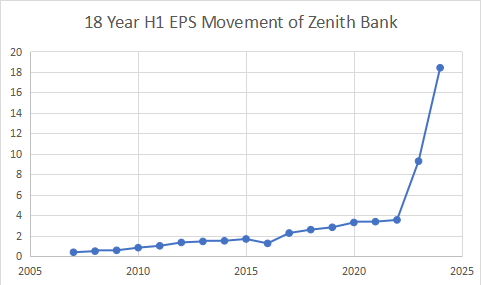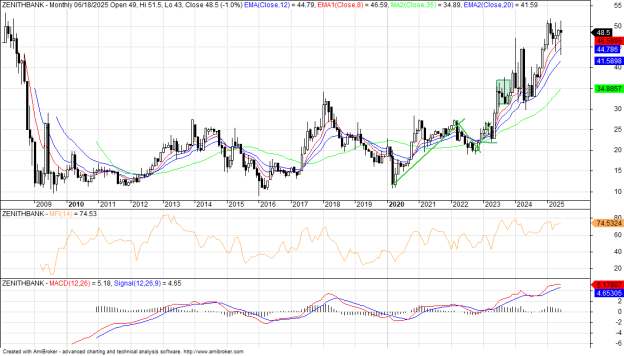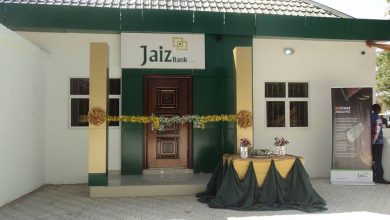Zenith Bank Plc: CBN Forbearance Removal As Test Of Strength, Stability, Capacity

In the wake of the decision by the Central Bank of Nigeria (CBN) to terminate its regulatory forbearance framework, the nation’s banks are now required to recognize loses arising from such restructured, or at-risk credit facilities in their books.
While this introduces a sector-wide pressure on the institutions affected, Zenith Bank Plc, on Wednesday effectively assured that it has emerged as a standout institution, equipped with the capital strength, earnings stability, and liquidity reserves to absorb shocks arising from the encumbered facilities. In a statement, it assured of its ability to preserve value for shareholders, and sustain investor confidence.
This is a comprehensive analysis by Investdata Consulting Limited of Zenith Bank’s core financial strength, illustrating why it remains one of Nigeria’s most resilient, profitable and systemically significant financial powerhouses.
It is noteworthy that this institution has consistently grown its quarterly and yearly earnings for the past thirty years, which has supported its consistently high payout to shareholders, thereby positively impacting its share price in all those years.

- Capital Adequacy: A Pillar of Stability
Zenith Bank’s capital strength as a major buffer:
- Tier 1 Capital:₦3.08 trillion
- Tier 2 Capital:₦739 billion
- Total Regulatory Capital:₦3.82 trillion
- Capital Adequacy Ratio (CAR):>16% vs. 15% CBN minimum (plus 1% buffer for D-SIBs)
The CBN requires a minimum CAR of 15%, plus a 1% buffer for those commonly identified as Systemically Important Banks. Zenith Bank comfortably exceeds this, enabling it to handle regulatory credit shocks without breaching solvency thresholds. Such a strong CAR places Zenith Bank well above regulatory minimums, allowing it to absorb significant credit losses without capital distress.

- Earnings and Profitability Metrics
It maintains a robust profit level, which enhances its internal capital generation:
- Gross Earnings:₦3.97 trillion (+86% YoY)
- Profit Before Tax:₦1.33 trillion (+67% YoY)
- Profit After Tax:₦1.03 trillion
- Earnings Per Share (EPS):₦32.87
- Return on Equity (ROE):~24%
- Return on Assets (ROA):~3.7%
These figures reflect Zenith Bank’s ability to generate high-quality earnings, enabling it to internally fund capital and support credit risk absorption.
- Loan Impairments and Risk Coverage
Zenith has proactively built credit reserves:
- Loan Impairment Charges (2024):₦658.8 billion (+61% YoY)
- IFRS 9 Stage 3 Loans:₦240.96 billion
- Additional Prudential Provisions:₦940 billion (classified under watchlist, doubtful, lost)
These provisions reflect a conservative and proactive stance, with over ₦1 trillion set aside to address credit risks as loans exit forbearance.
- Liquidity and Loan Quality
Zenith Bank’s balance sheet remains liquid:
- Customer Deposits:₦17.6 trillion
- Loans to Customers:₦10.2 trillion
- Loan-to-Deposit Ratio (LDR):~58% (below the 65% regulatory cap)
This low LDR shows liquidity flexibility that can enable it manage asset quality shocks.
Meeting recapitalisation targets ahead of the 2026 deadline:
- Capital Raised:₦343 billion via rights and public offers
- Shares Increased:From 31.4 billion to 41.07 billion units
Zenith Bank is strategically strengthening its capital base for long-term sustainability.
While the CBN’s termination of forbearance will impact sector-wide earnings, Zenith Bank is uniquely equipped to manage the transition, helped by its superior capital adequacy, proactive provisioning, strong profitability, and sound liquidity. All of these place the group in a class of its own, just as it is expected to maintain operational stability, protect shareholder value, and recover dividend capacity faster than its peers.
Recommendation: Investors should maintain a positive outlook, because the bank remains a top-tier, systemically important bank with the resilience to withstand macro-financial shocks in Nigeria’s evolving banking landscape. On Wednesday 18, June 2023, following the assurance by its management of the bank’s capacity to sustain its culture of interim and full-year dividend payment, its share price was up by 5.32%, a display of Investor confidence in the Tier 1 banking stock despite the forbearance news.
Technical View of Zenith Bank

Zenith Bank recently dipped to its November 29, 2024 price level, following the CBN’s decision to discontinue the forbearance framework, triggering a sharp decline on June 17. The stock has since staged a strong rebound, reflecting the renewed investor confidence and the notable insider trading in its shares.
Between February and June, the stock has ranged between ₦44 and ₦52 each, suggesting a period of consolidation. The recent bounce signals a potential breakout from this range.
The stocks Money Flow Index (MFI) stands at 59, indicating a healthy inflow of funds and sustained buying interest. However, the upcoming Q2 earnings could serve as a catalyst for further upside movement in price. The Relative Strength Index (RSI) reads 55, suggesting that a bullish momentum is building, but not yet overextended, which is a possible entry point for value-focused investors.
With technicals stabilizing and sentiment improving, Zenith Bank could be poised for a renewed upward movement in the medium to long-term. On a different time frames, price action of this stock remain strong to signal that an uptrend is underway for discerning investors and smart traders looking for value to create wealth.





